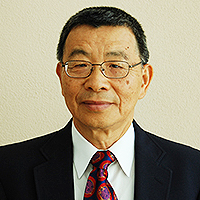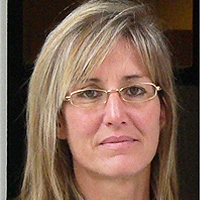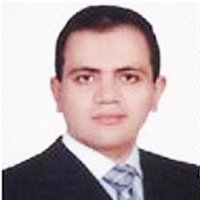Massive gastrointestinal bleeding; never too old to be due to Meckel’s Diverticulum - A case report and literature review
Published on: 3rd June, 2019
OCLC Number/Unique Identifier: 8165450550
Gastrointestinal (GI) bleeding is a very common medical problem encountered in the acute care setting, and is a major cause of admission to hospitals with about 300,000 patients admitted annually. Obscure GI bleeding, defined as persistent or recurrent bleeding following initial negative upper and lower endoscopy, represents approximately 5% of all GI hemorrhages. The small bowel is the most common source for obscure GI bleeding. Variable lesions of the small bowel can cause obscure GI bleeding, with tumors, Crohn’s disease and Meckel’s diverticulum being more common in young age group. Meckel’s diverticulum, the most common GI congenital malformation, is usually asymptomatic and incidentally found. It can present with GI bleeding, seen more in pediatric patients, and rarely in adult patients. Herein, we present a 45 years old female patient, presenting with massive obscure GI bleeding due to Meckel’s diveticulum.
Laparoscopic-Assisted Transumbilical Extracorporeal Resection of Meckel’s Diverticulum in 10 years old boy with symptoms of gastrointestinal bleeding
Published on: 20th April, 2020
OCLC Number/Unique Identifier: 8587366913
The Meckel’s diverticulum (MD) is the most common anomaly of ductus omphaloentericus that surgeon encounters in clinical practice. The accurate incidence is unknown because most patients with the Meckel’s diverticulum are asymptomatic. Most studies report an incidence of about 2%. Approximately 4% of patients with the Meckel’s diverticulum become symptomatic.
A 10 years old boy, was sent from regional hospital. His symptoms started the day before he was hospitalized and represented as gastrointestinal bleeding, lower abdominal pain and four times vomiting, without fever. Ultrasound and X-ray of the abdomen were normal. Blood findings showed: RBC 3,19, hemoglobin 0,95, hematocrit 0,27. During a physical examination abdomen was palpatory soft, with no presence of the pain. Digital rectal examination showed blood. A scintigraphy pathologic scan showed a focal lesion of the right hemi abdomen consistent with the Meckel’s diverticulum.Patient was treated byLaparoscopic-Assisted Transumbilical Extracorporeal Resection of the Meckel’s Diverticulum.
A rare case: Congenital Megalourethra in prune belly syndrome
Published on: 30th January, 2018
OCLC Number/Unique Identifier: 7355941035
Introduction: Prune Belly syndrome is a disease characterized by abdominal muscle defect, bilateral cryptorchidsim and urinary system anomalies (reflux megaureter, hydronephrosis, etc.). Pulmonary, cardiac, and gastrointestinal anomalies may also be present. Management of these rare cases is very important. In this case, the clinical course of a patient with Prune Belly syndrome with megaurethra is presented.
Case: The patient from the first gestation and parturition with birth weight of 2500 g and 38 weeks was hospitalized because of the bilateral hydronephrosis. His physical examination revealed undescended testicles and a large penis. The abdominal muscles were not very atrophic. The size of the kidney was small, bilateral hydroureteronephrosis and wide posterior urethra on the ultrasound. Renal function tests were progressively disturbed and the patient underwent cystourethroscopy for diagnostic purposes in terms of posterior urethral valve. A large diverticulum was found in anterior urethra. Prune Belly Syndrome was thought because the orifices were in appearance of reflux. The vesicostomy was applied. After vesicostomy the renal function tests got better but he was hospitalized due to urosepsis two times. In cystoscopic examination, the diverticulum in the urethra was filled with urine and the drainage was very slow. Phimosis was opened with dorsal slit technique. Cutaneous urethrostomy was proximal to the anterior diverticulum.
Conclusion: Prune Belly syndrome should be considered in patients with megaurethra and postrenal or renal insufficiency although there are no obvious clinical findings. In Prune Belly cases, via a large penis with obstruction signs, anterior urethral diverticulum should be considered.
Clinical, histopathological and surgical evaluations of persistent oropharyngeal membrane case in a calf
Published on: 5th August, 2019
OCLC Number/Unique Identifier: 8198752192
A male, 4 days old and 20 kg Simmental calf was evaluated for regurgitation and hyper salivation since birth. The mother became pregnant by artificial insemination and the pregnancy was the second of the mother. A membrane closed the pharynx and a diverticulum on dorsal of this membrane was seen during oropharyngeal examination through inspection. Membrane was also viewed by endoscopy under general anaesthesia. Larynx and oesophagus were imaged by bronchoscopy through the back side of the membrane. After these applications, it was decided that soft palate adhered firmly to the root of tongue causing congenital atresia. Surgical treatment of oropharyngeal membrane was carried out under general anaesthesia. Firstly, tracheotomy was performed for to ease breathing and membrane removed by electrocautery application. Intensive fluid accumulation and oedema formation at the incision area were detected by endoscopic examination following operation and the calf had severe dyspnoea two days after operation and died due to respiratory insufficiency. At necropsy, severe inflammatory reaction, laryngeal oedema and intensive salivation at the surgical side was determined. Direct imaging techniques should be used to determine in the closed oropharyngeal lumen. Moreover, nasopharyngoscopy should be considered to image larynx and oesophageal way. Present case is the first report with concern to pharyngeal membrane formation together with direct imaging and surgical procedures. Therefore, it was considered that this case report could be useful for colleagues and literatures.
















